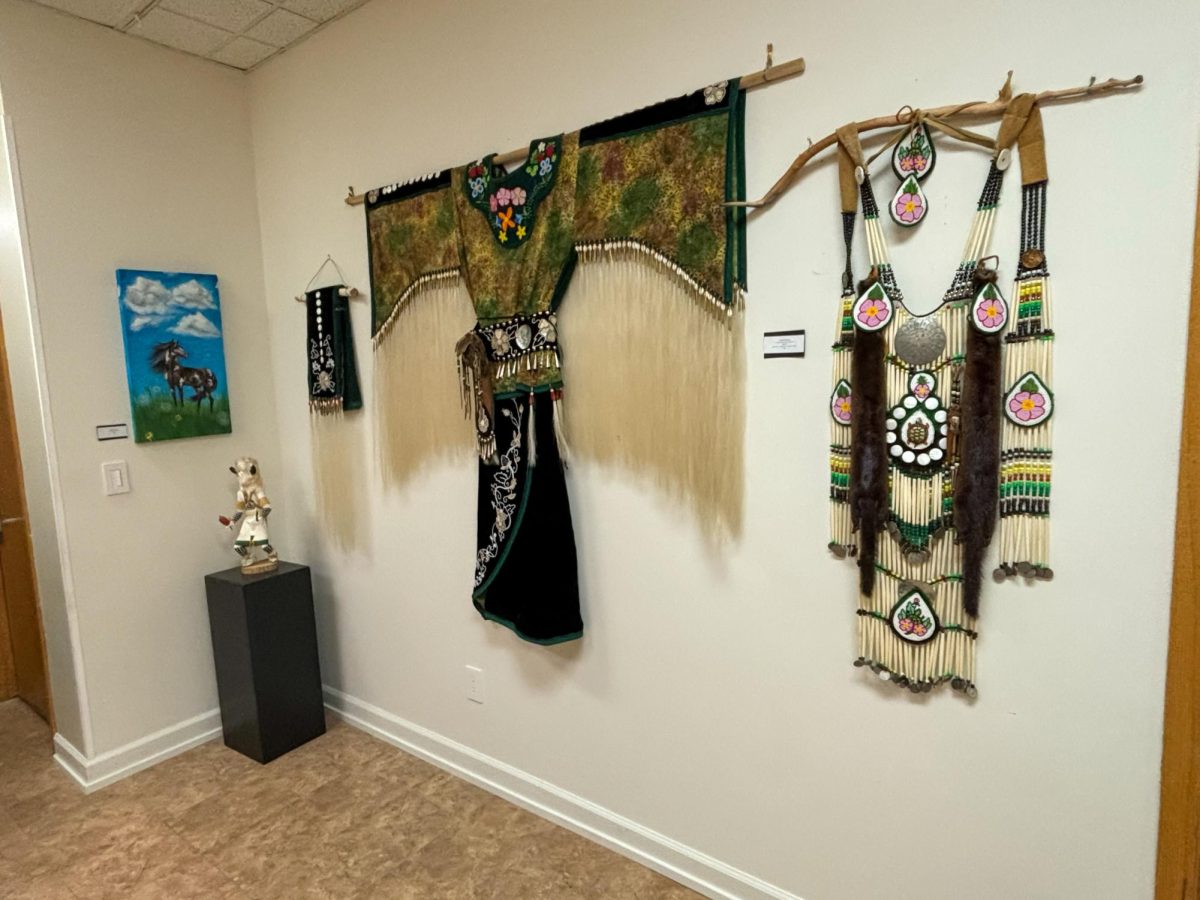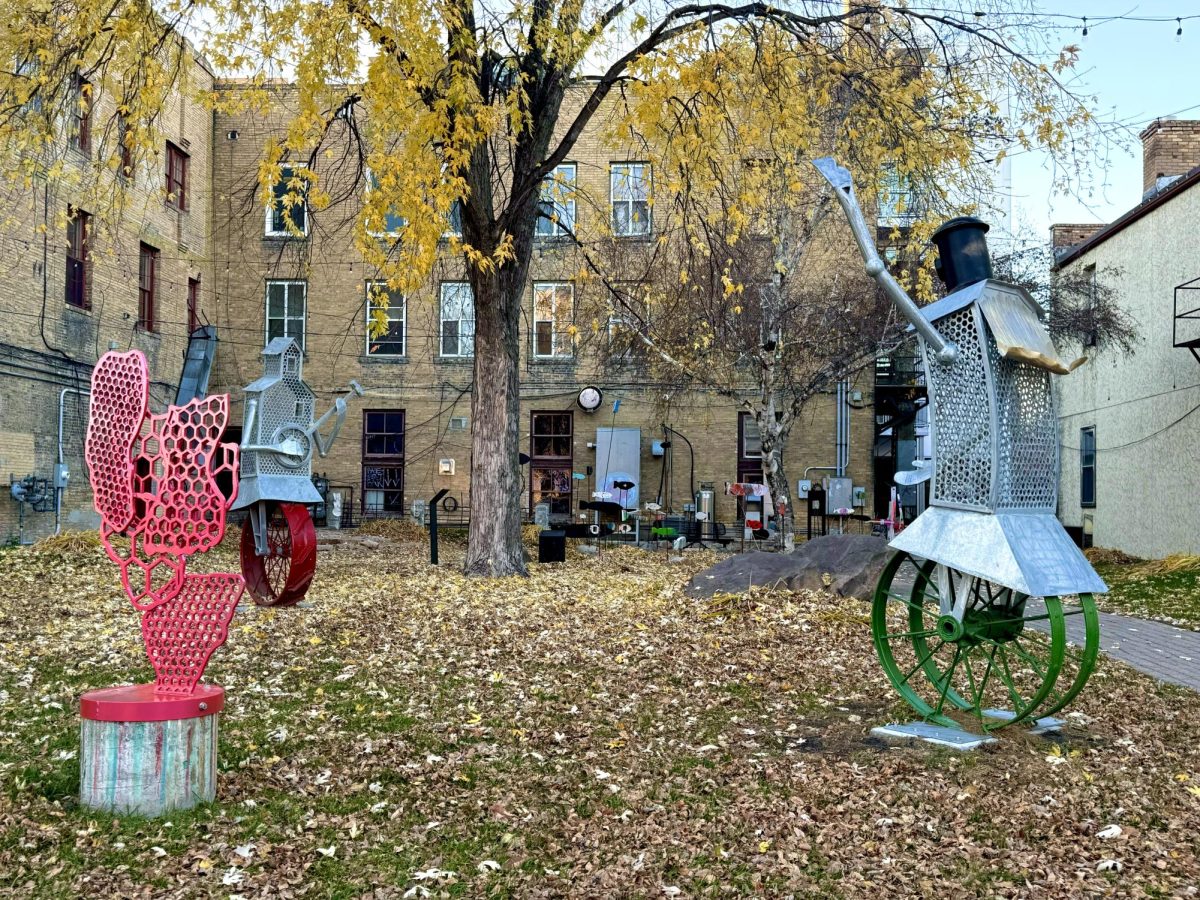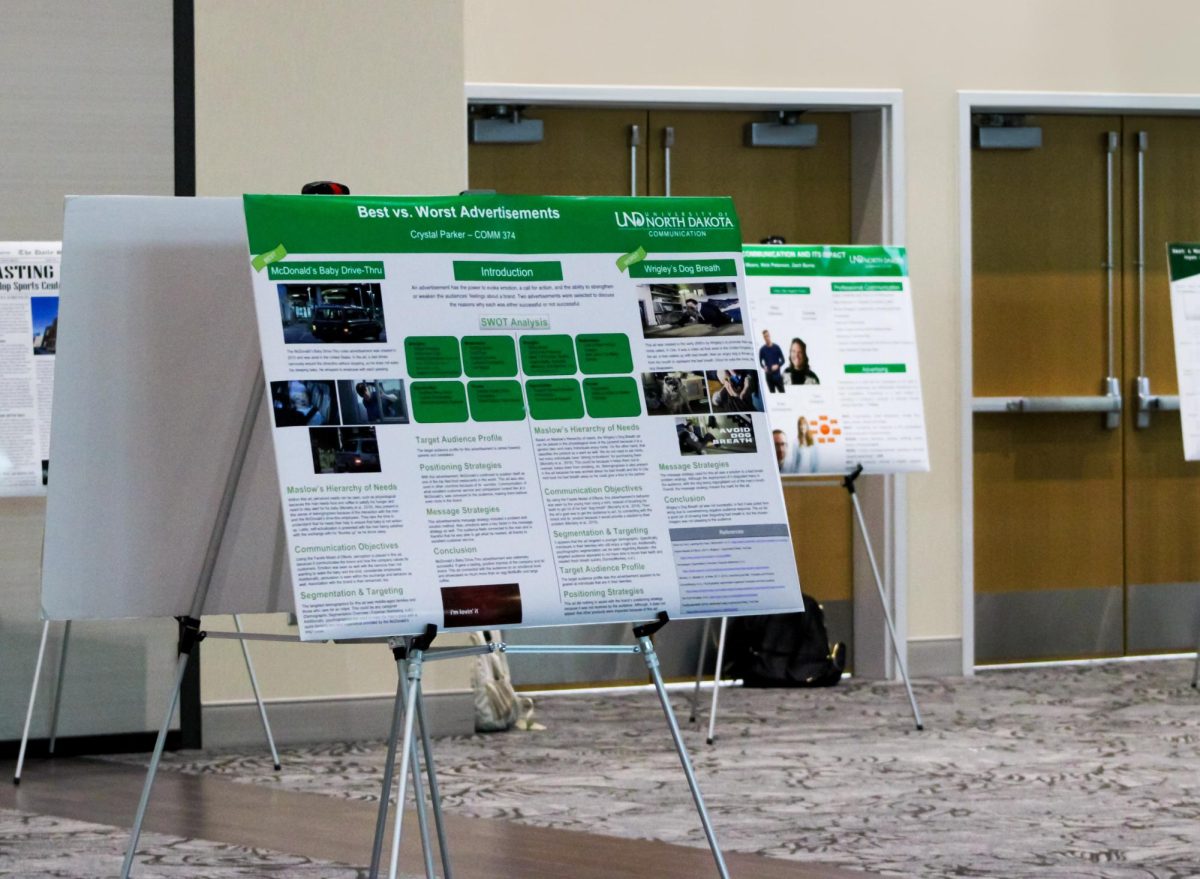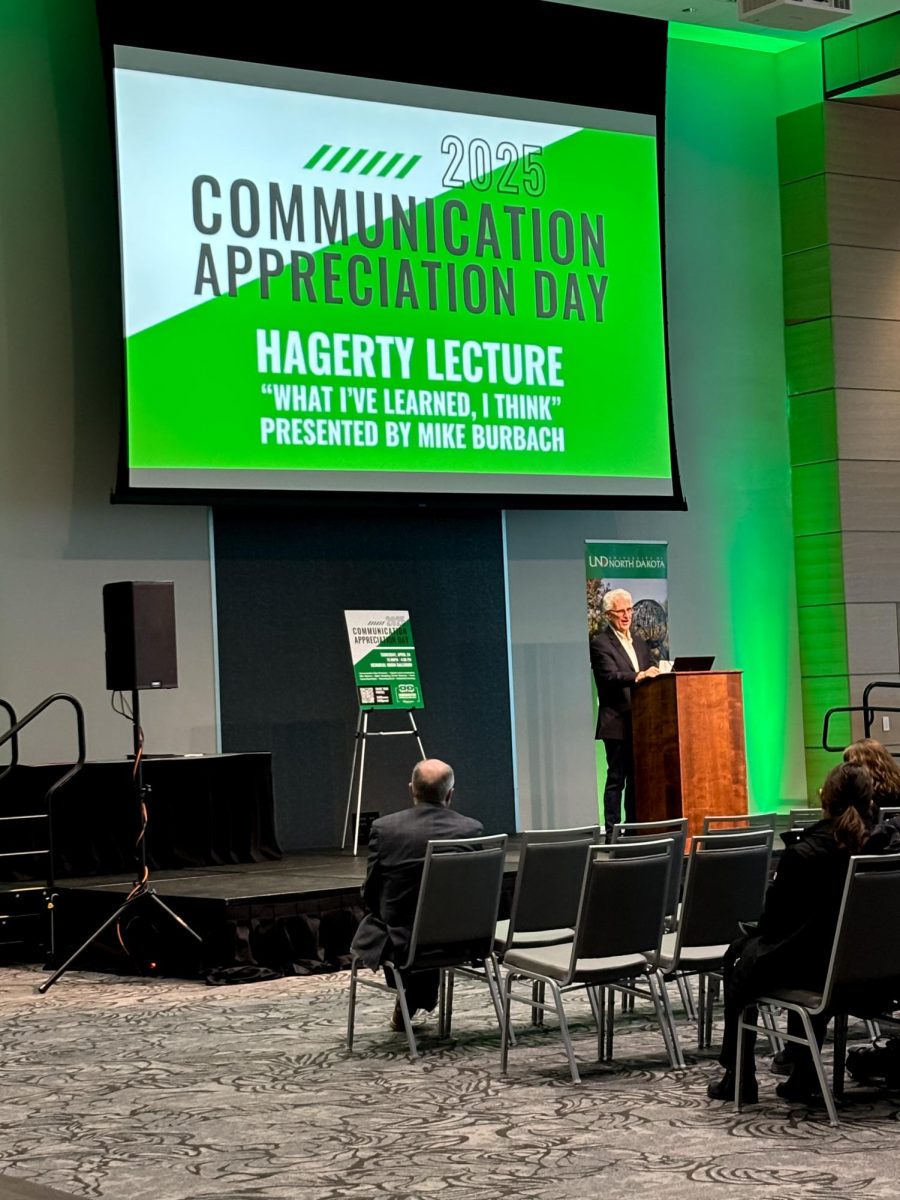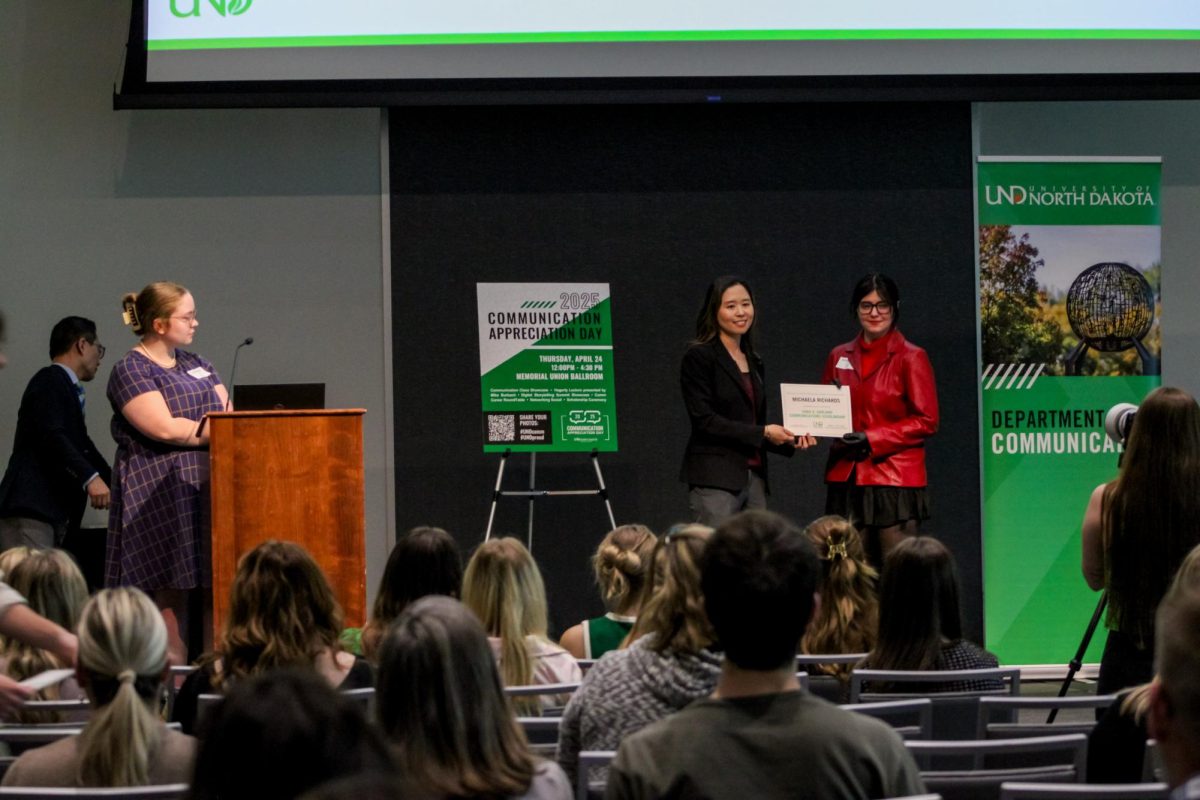The Diamond Willow Indigenous Arts Gallery, named for the distinct patterns found in diamond willow wood, recently opened its doors to the public in downtown Grand Forks. Located in the RiverView Center, the gallery provides a space for Indigenous artists to share their work with the community. Organizers hope the space will grow into a venue for cultural education and artistic exchange.
The gallery, operated entirely by Native artists and veterans, was developed with support from the non-profit Arts for Vets. It is the first Native-run gallery in the Red River Valley and one of the few in North Dakota situated off a reservation.
“We started meeting with the Indigenous Diamond Willow Committee a few months ago,” Kimberly Forness Wilson, executive director of Arts for Vets, said. “When this space became available, I called a couple of sponsors and they immediately supported the vision.”
The gallery’s name reflects the natural beauty of diamond willow wood, a material often used in the work of contributing artist Terry Lavallie. Diamond willow is slow-growing, and its distinctive patterns are created by fungal growth that leaves dark, diamond-shaped marks on the wood beneath its bark.
“Once you take the bark off, you’ll start to see the contrast in the wood,” Lavallie said. “No two pieces are ever the same. Never. They’re not the same. When you work with it, it’s like, oh, look at the diamond in this one.”
Lavallie is particularly fond of wood, crafting lamps, picture frames, and crosses from diamond willow, each piece emphasizing the unique characteristics of the material. He explained that the wood’s resilience mirrors the strength of Indigenous traditions.
In addition to displaying Indigenous art, the gallery offers opportunities for learning about traditional practices. Wilson said the gallery creates an environment where the community can engage with Indigenous culture through workshops, demonstrations, and exhibits.
“We created a little craft room for things like ribbon skirt making and beading,” Wilson said.
Workshops are often led by elders, who share their skills and knowledge with participants.
Lavallie noted that the gallery regularly features new art, ensuring visitors have a fresh experience each time. “You can come today and in three months, you’ll see things that weren’t here before,” he said.
The gallery’s formation was a collaborative process. Discussions within Arts for Vets revealed a shared interest in creating a dedicated space for Indigenous art. When a unit in the RiverView Center became available, organizers moved quickly to bring the idea to fruition.
“This has been kind of in the making since we became Arts for Vets,” Wilson said. “It was always percolating, but now it’s come together.”
Native veterans have played a significant role in the gallery’s development, with many contributing their own artwork.
Lavallie shared how visitors have reacted to his work with diamond willow, recounting an interaction with a tourist from New York City who was struck by the wood’s uniqueness.
“I had a guy that came, and he was looking at the diamond willow,” Lavallie said. “He said, ‘I’ve never seen this before. Where did you get this?’ I said, right here.”
Organizers plan to expand the gallery’s offerings in the coming months, with a focus on accessibility and outreach. A website is under development to feature artist profiles, crafting tutorials, and podcasts with artist interviews and instructional content.
“Our goal is to bring this art to the world,” Lavallie said. “We want people everywhere to see the beauty and history that go into every piece.”
Plans are also in place to extend the gallery’s hours and host additional community events. Currently, the gallery is open Monday through Thursday from 6 to 8 p.m. and on Saturday afternoons. Visitors can also schedule appointments for flexible viewing times.
Workshops and demonstrations led by elders play a key role in passing down Indigenous knowledge to younger generations. Wilson said the gallery fosters a sense of community through its classes and cultural events.
“We’ve been meeting and doing classes for months,” Wilson said. “It’s been amazing to see people come together to learn and create.”
Visitors to the gallery can view rotating exhibits, interact with artists, and participate in workshops that highlight the cultural significance of each piece. Lavallie emphasized that engaging with the public is a key part of the gallery’s mission.
“Some people come in just to look, and that’s fine,” Lavallie said. “The goal is to share this art with the world and let people see something they may not have encountered before.”
Though the gallery is in its early stages, the team has ambitious plans for its future. Organizers aim to make it a regional destination for cultural education while supporting Indigenous artists and veterans.
“This is the first fully Native-run gallery in the Red River Valley,” Wilson said. “It’s a space where Native artists can come together, share their work, and connect with the community.”
As the gallery grows, its leaders remain focused on its core mission of celebrating Indigenous resilience and creativity. The Diamond Willow Indigenous Arts Gallery offers a space to preserve and share the traditions that shape its vision.
To keep up to date with the Indigenous Arts Gallery, follow Arts for Vets on Facebook or visit their Instagram @artcentergf
Davíd Moreno is a Dakota Student General Reporter. He can be reached at davíd.moreno@und.edu.


